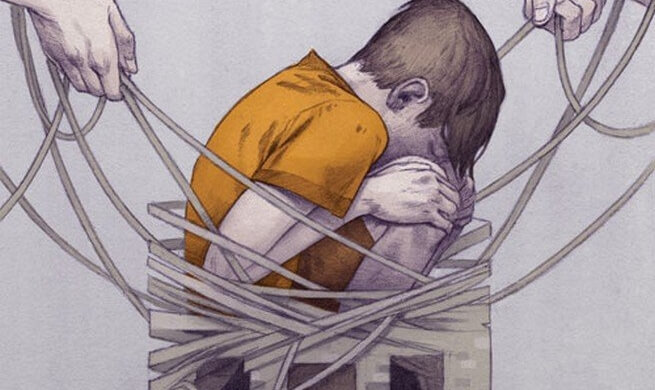Why is It a Mistake to Use Corporal Punishment on Children?


Reviewed and approved by the psychologist Sergio De Dios González
Corporal punishment has disastrous consequences on a child’s development. While it’s true that sometimes it seems like the easiest way to handle a child’s disobedience, hitting them is never the best solution. It might be effective — at first — and convenient, but that’s only because it doesn’t take any thinking.
But there is always a better choice. There is a way to raise a child that, despite the extra effort it will take, will be much better for them in the long term.
What is corporal punishment?
Unfortunately, some parents still believe that old saying: “spare the rod and spoil the child”. However, each blow leaves a mark that does more harm than good. It creates something in them that’s much more like fear than a desire to behave well. Disciplining children with corporal punishment will set them back in their development.
When we refer to corporal punishment, that includes shoving, shaking, pinching, and slapping. These acts might stop a certain behavior, but they don’t explain how that behavior is wrong. It just associates that action with a punishment.

Logically, corporal punishment just encourages behavior we don’t actually want in our children. We already know that children tend to imitate what they see. Thus, if they see physical aggression in their daily lives, they will understand that it’s okay to hit others.
“Oftentimes we give children answers to memorize instead of problems to solve.”
-Roger Lewin-
In fact, if we love our little ones and they perceive this love, but you still hit them when they misbehave or don’t understand something, they’ll think hitting is a part of love. They will develop the understanding that intimidation and violence are valid ways to love. After all, adults know everything — in the eyes of a child, at least.
Consequences of corporal punishment in children
As you can see, corporal punishment does little good outside of stopping a certain behavior temporarily. The negative effects can be very serious, especially in the long term. And if we add things like yelling to it, the emotional issues will multiply. That’s why it is important to keep these consequences in mind:
- Hitting a child inhibits healthy independence and initiative. It makes it harder for him to solve problems and love himself. It leads to poor self-esteem.
- It also limits his intelligence as he grows. Corporal punishment interferes dramatically in the learning processes.
- Also, it causes problems in family relationships. It will affect him socially and emotionally.
- Corporal punishment can make a child feel abandoned, sad, and alone. He will feel useless and unnecessary.
- The child’s worldview will gradually turn dark, negative, and threatening. He’ll feel like he doesn’t have a place in the world.
- The child may get out-of-control angry and feel the urge to run away.
How to discipline a child without resorting to violence
We know it’s not always easy to discipline children. It’s normal; they have their own personalities and want to express themselves. However, violence is never the answer. When they are very young, there’s no reasoning with them. But they should begin absorbing the rules and norms of the home starting very early on.
There are many alternatives to corporal punishment and ways to foster a healthy home environment. For example, you can use positive reinforcement. Reward good behavior instead of punishing bad behavior. By teaching them which behaviors are correct, you are also signaling which ones are not. This is the power of positive reinforcement.
This text is provided for informational purposes only and does not replace consultation with a professional. If in doubt, consult your specialist.








